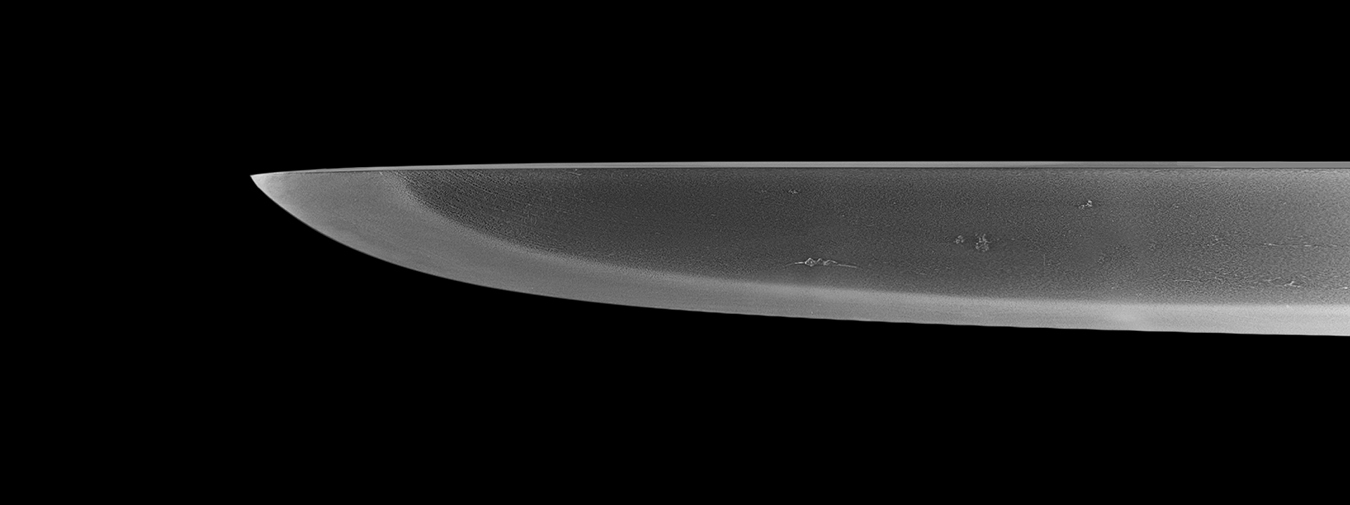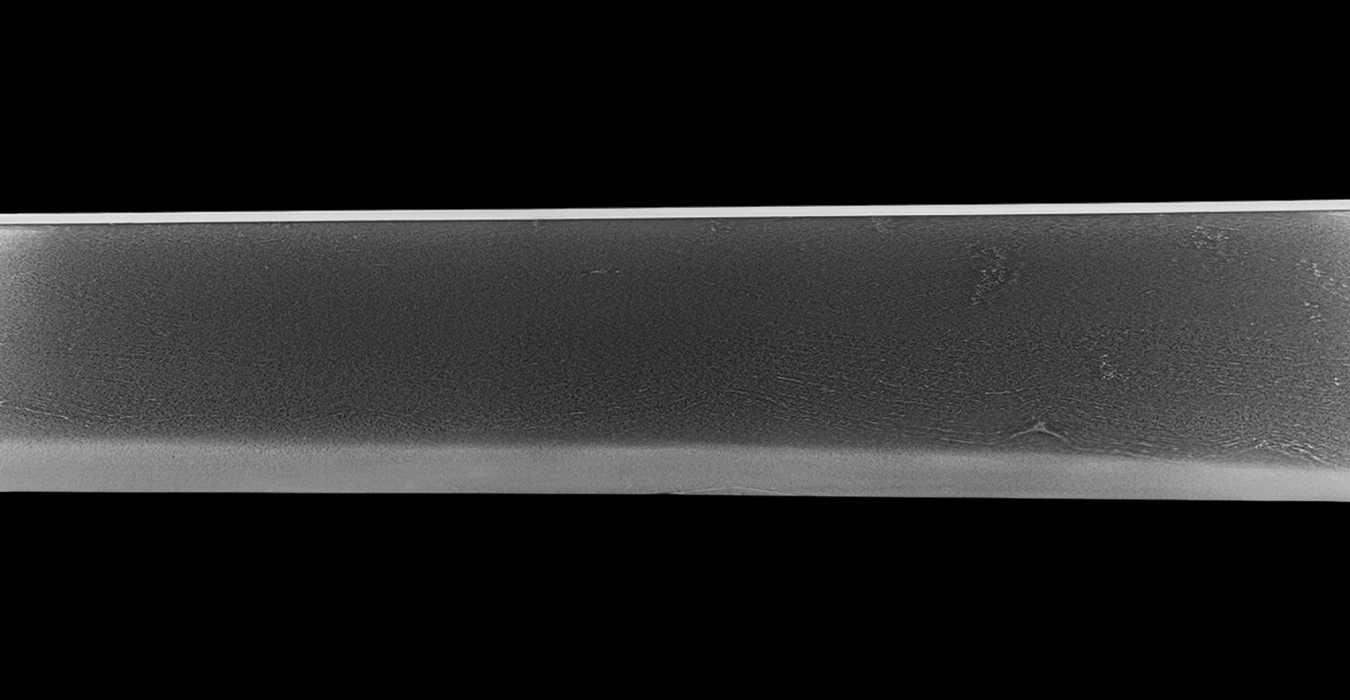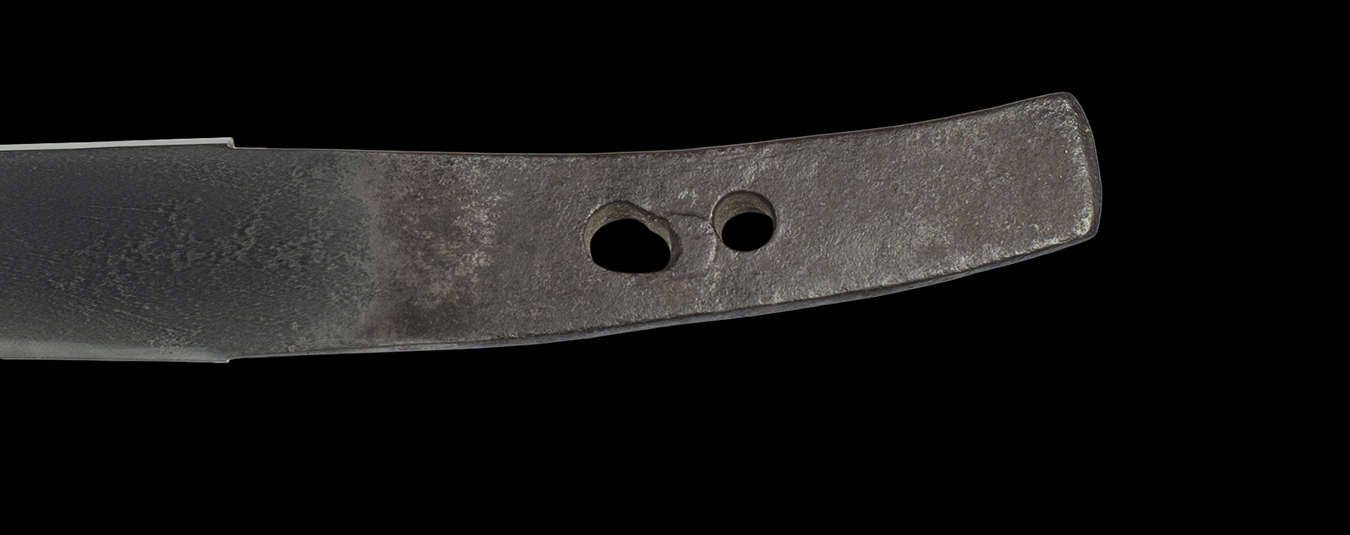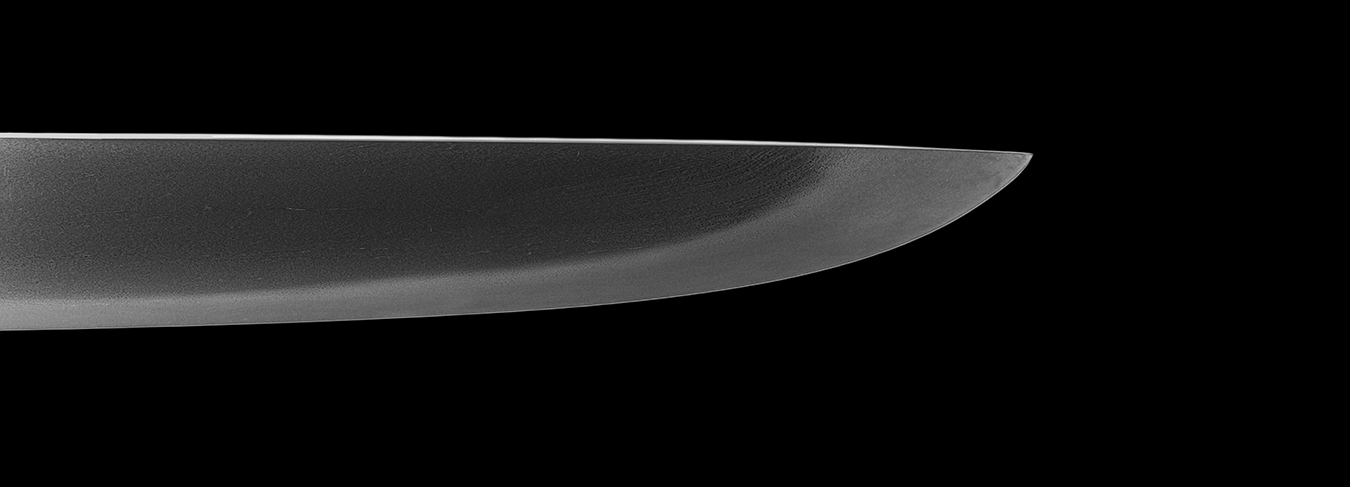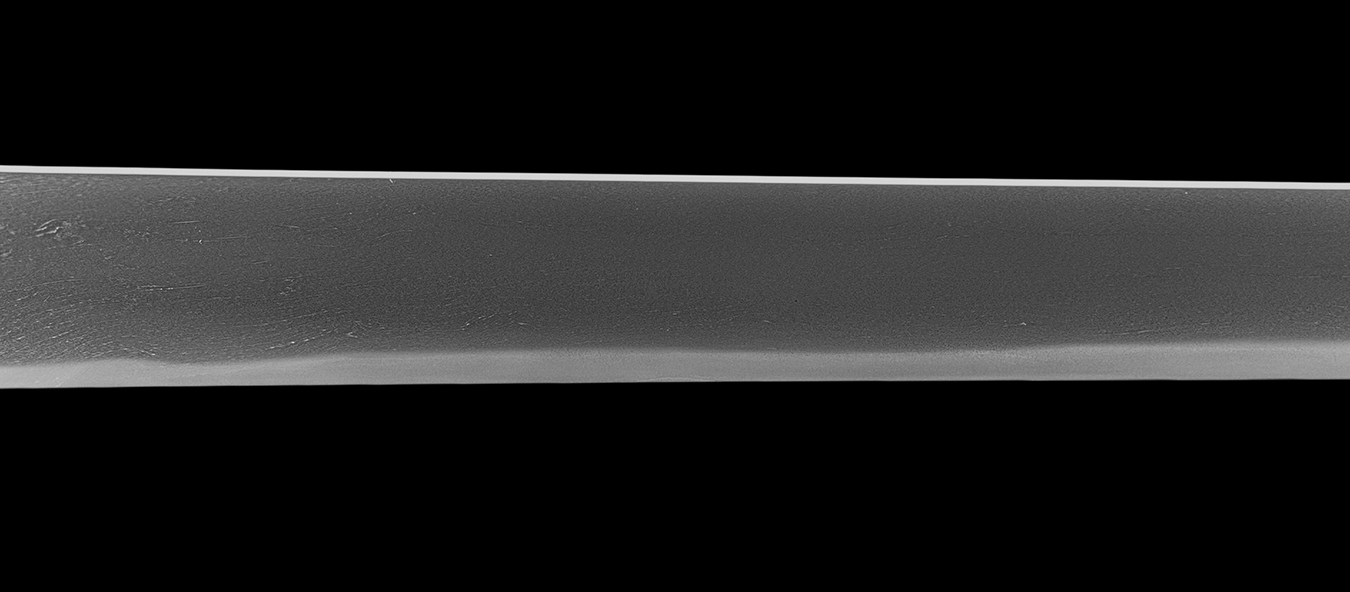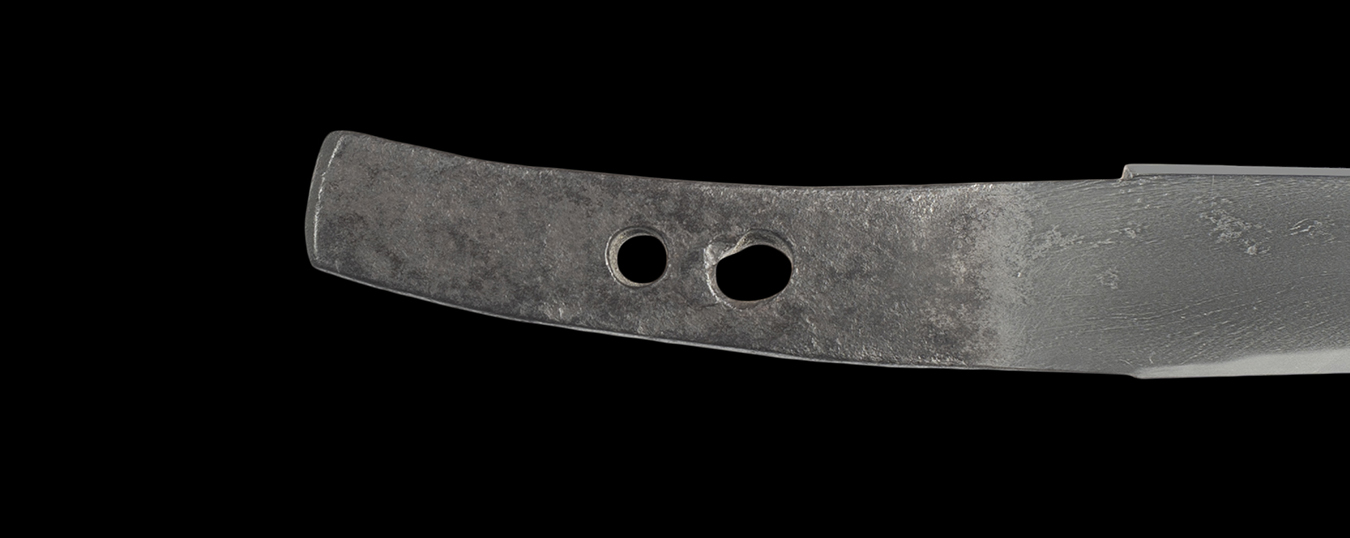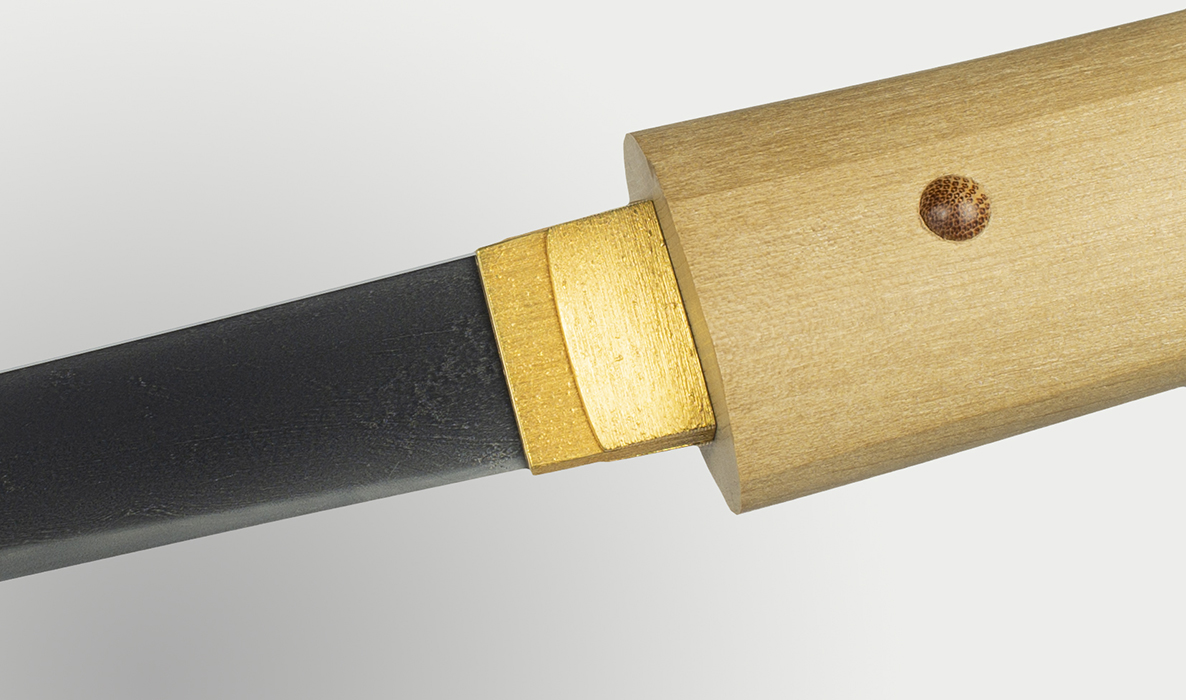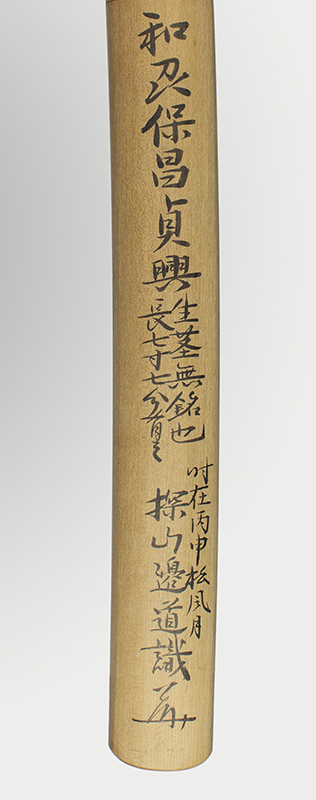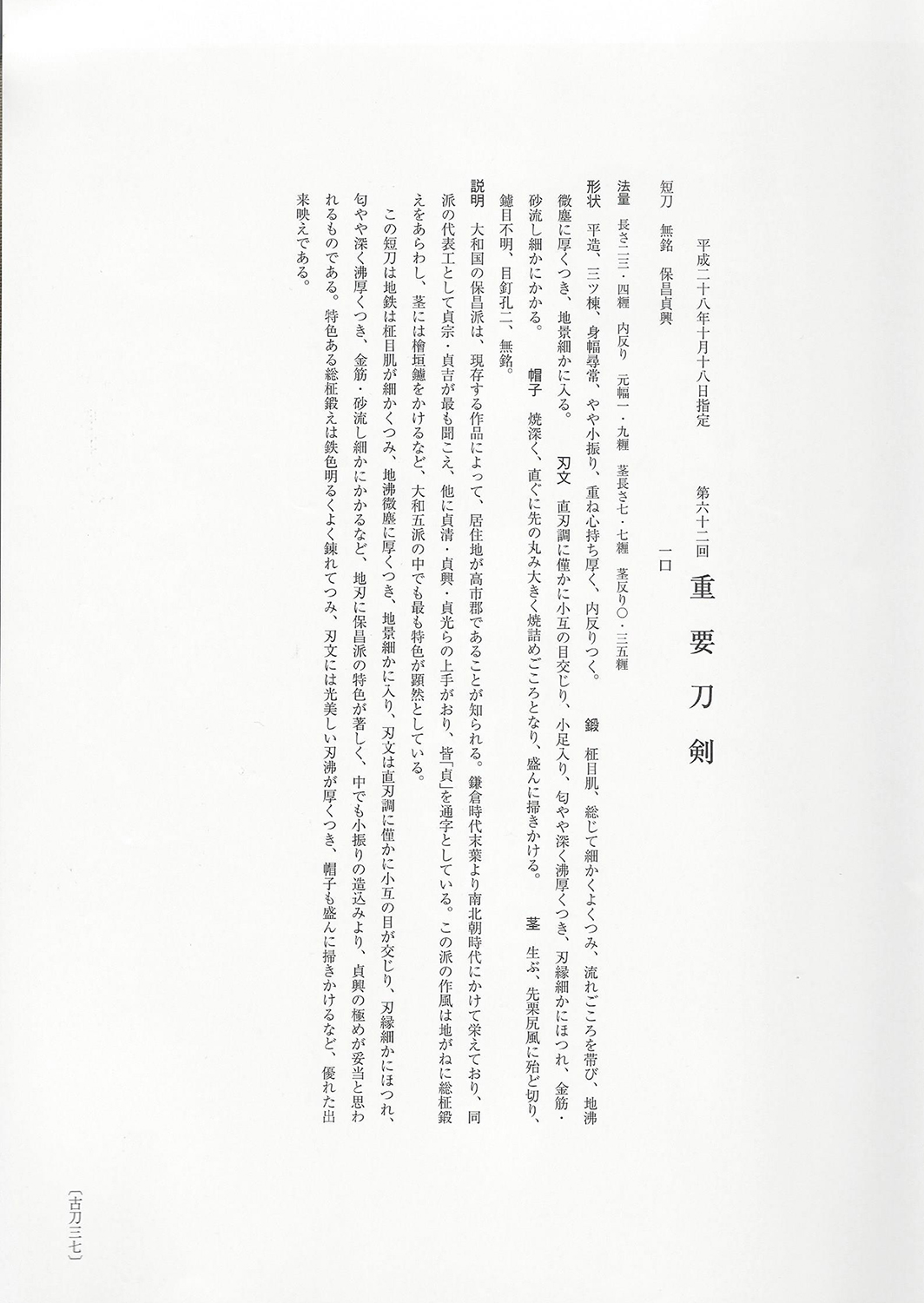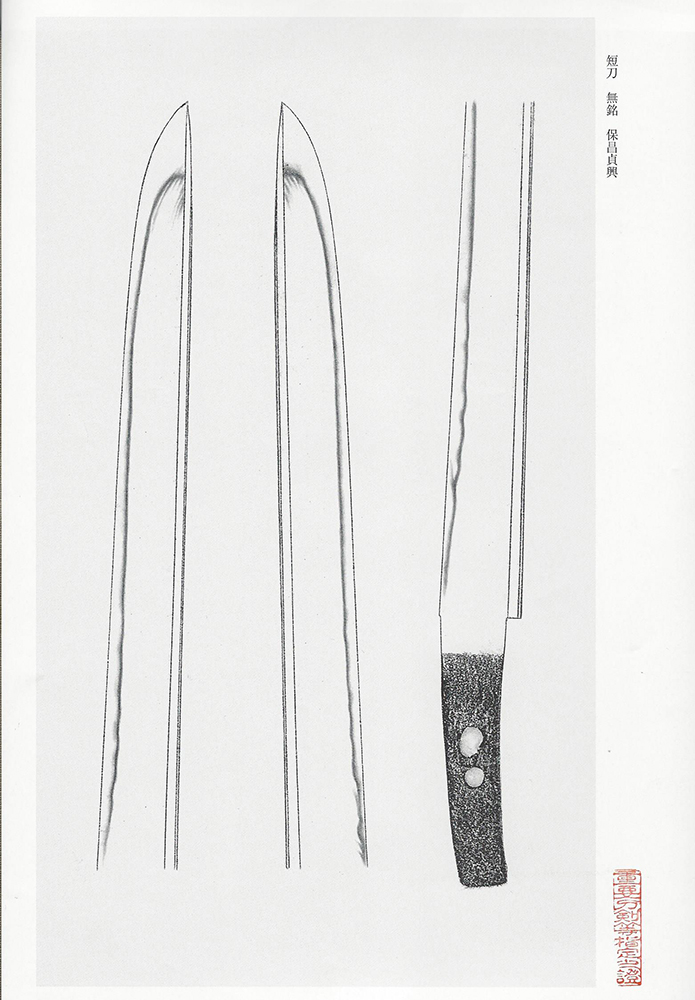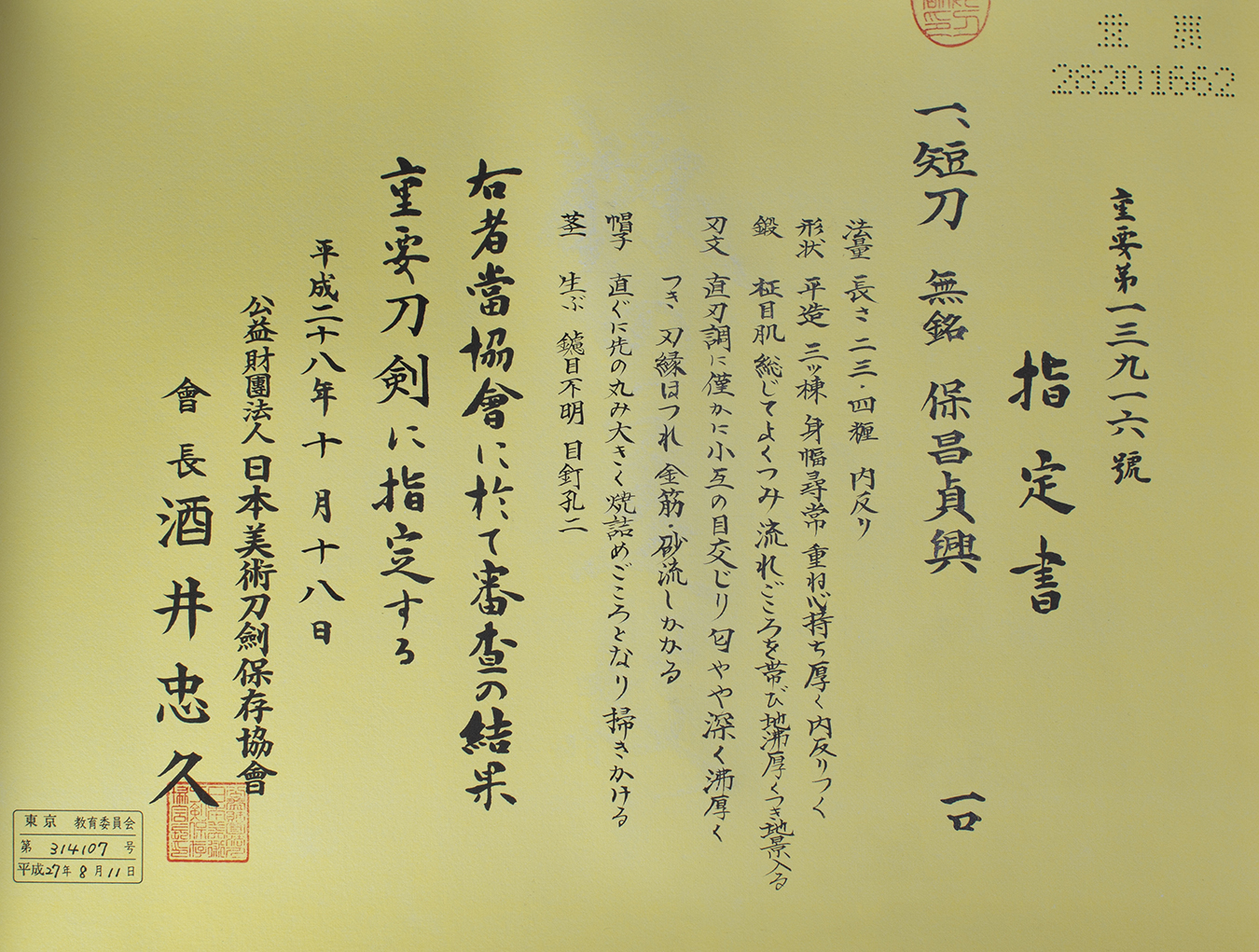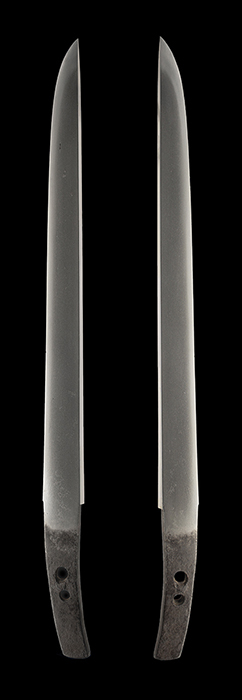|
| |||||||||||||||||||||||||||||||||||||||||||||
Hamon : Ko-nie deki suguha. There are some ko-gunome mixed in and ashi are present. The nioi-guchi is deep and covered with thick nie. Fine hotsure, kinsugi, and sunagashi can be seen at the ha-saki.
Boshi : Deep yaki, sugu boshi with an o-maru tip that becomes yakizume. Hakikake and strongly swept with ko-nie.
Kitae : Pure masame hada. Ji-nie coats the entire surface. All of the nie are ko-nie. Chikei can be seen. The masame hada turns toward the mune on both sides of the saki.
About this sword : A Juyo Token tanto attributed to Yamato Hosho Sadaoki. The Hosho school is one of the five traditions of Yamato den. These include the Senjuin, Tegai, Taema, Hosho and Shikkake groups. Of all of these, Hosho works are the rarest. Sadaoki is a representative and highly regarded smith of the Hosho school. He was active around Joji (1362-1368) and said to be the son of Sadamune. He is ranked at Jo Saku by Fujishiro and valued at 5.5 million yen in the Toko Taikan.
This mumei tanto was awarded a Juyo paper in 2016 at the 62nd session. It is important to note that the blade was given to a specific smith. In this case, Sadaoki, and without the use of "den". This indicates that the NBTHK saw this blade as showing all of the traits of Sadaoki in a textbook manner. It is more typical for Juyo Hosho to have only a school attribution due to the scarceness of zaimei works for comparison and the similarity of deki among them.
Some key points of appreciation to note in this tanto that are Hosho traits: The masame hada is prominent , the ji-nie is profuse, the masame hada turns toward the mune at the saki, a few tate-ware can be seen, a trace of higaki yasuri remains and the boshi is yakizume style with hakikake.
The Juyo paper states that existing Hosho works range from late Kamakura to Nanbokucho. Of the five Yamato schools, Hosho works have the most unique characteristics. These are masame hada and higaki yasurime.
Regarding this tanto, the Juyo paper states that it has a very fine masame, a thick layer of "fine dust nie" and fine chikei. The hamon is sugu based with ko-gunome. The edge of the hamon contains fine hotsure, deep nioi-guchi and thick nie. Kinsugi and sunagashi are present and refined. The jigane and hamon are showing Hosho characteristics clearly and those extremely proper to Sadaoki. The unique traits are that the steel is all masame with the steel color showing clearly. The reflective quality of the hamon is beautiful. The nie in the hamon is thick. The boshi is strongly hakikake and the blade is extremely well made.
This tanto has a saya-gaki by Tanobe Michihiro that also attributes the blade to Hosho Sadaoki. The shira-saya and gold foil niju habaki were professionally made in Japan and there is a storage bag. The Juyo paper and Juyo Nado Zufu description page accompany the sword. An important blade and amazing treasure to behold.


